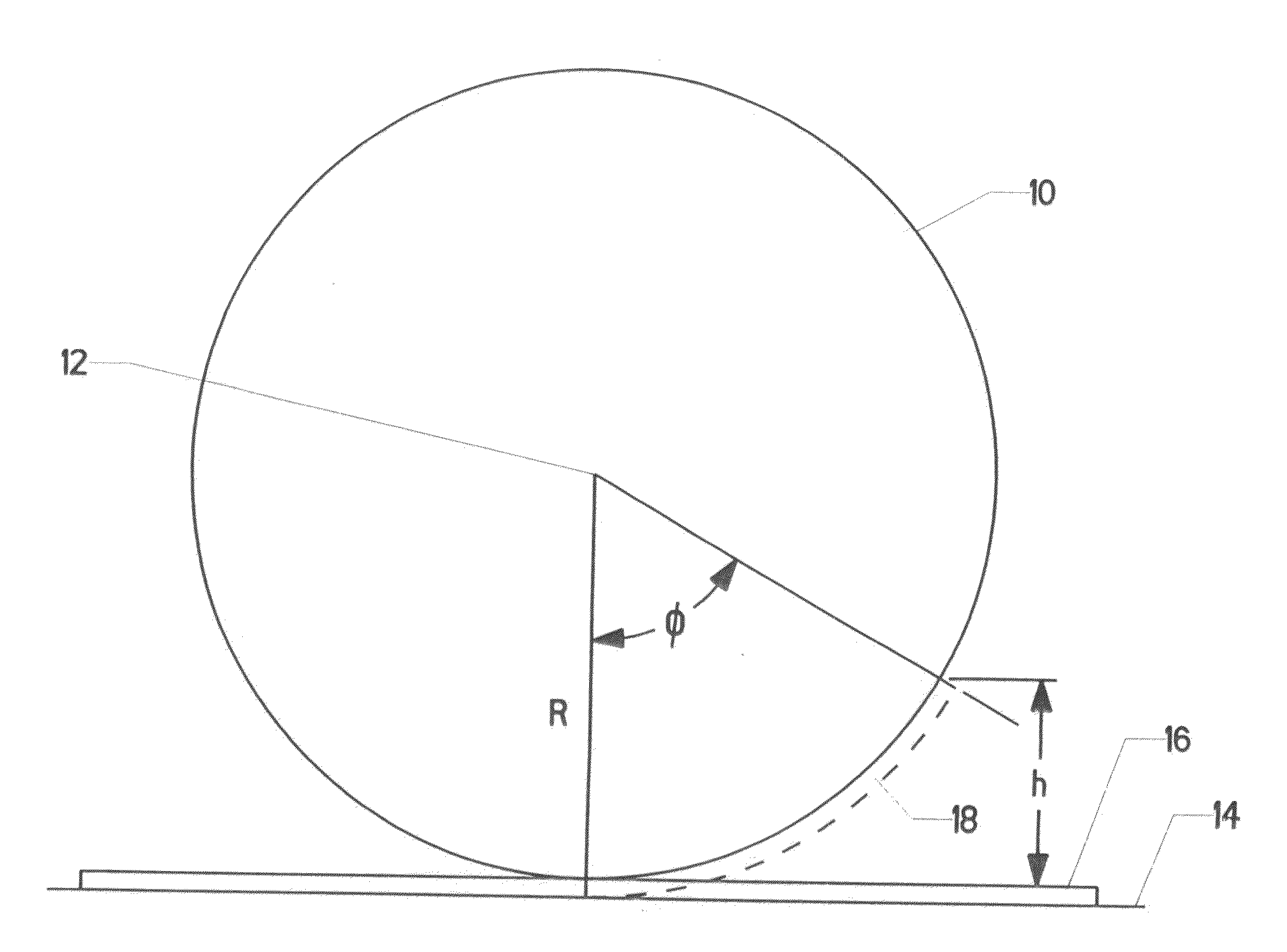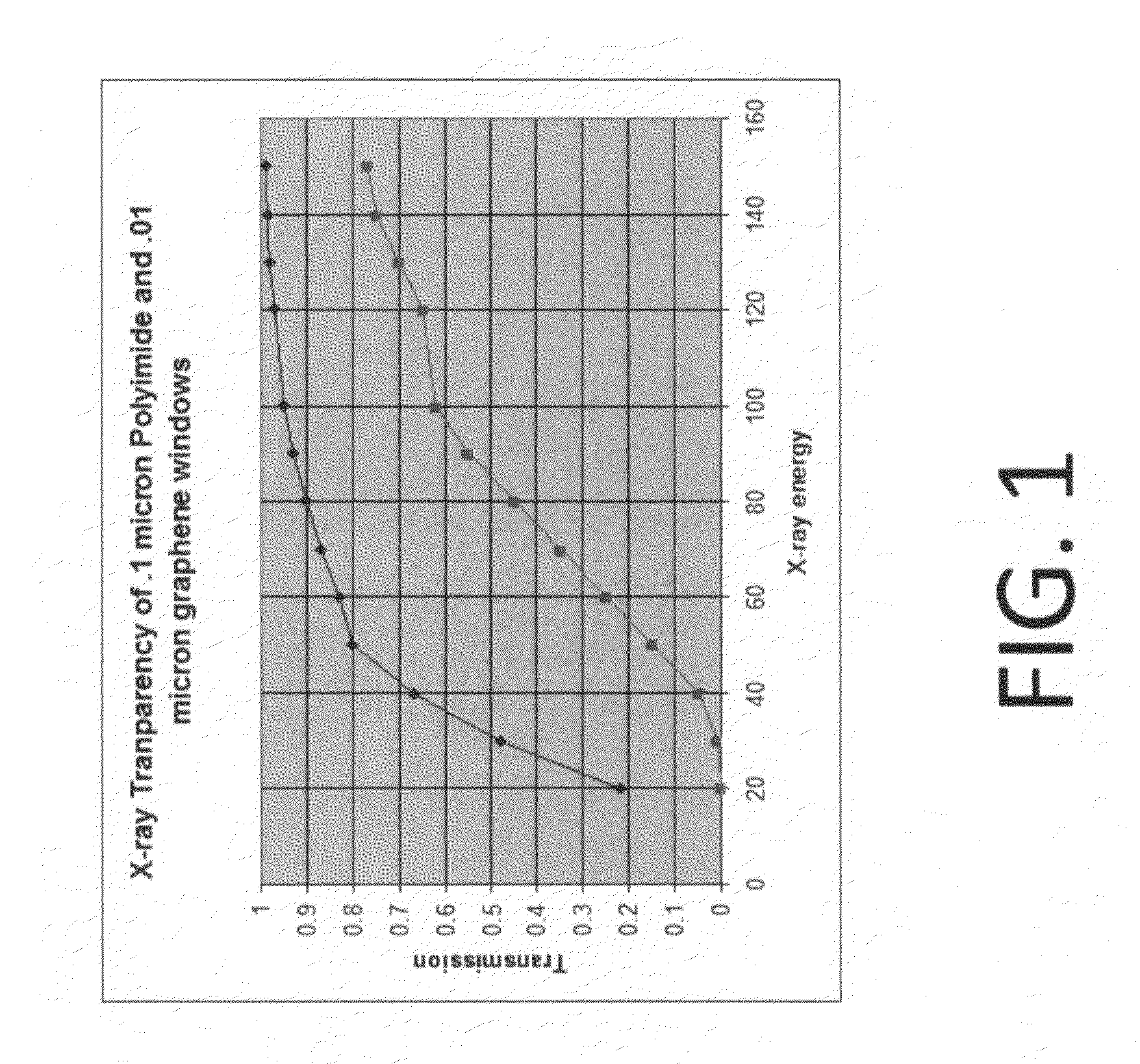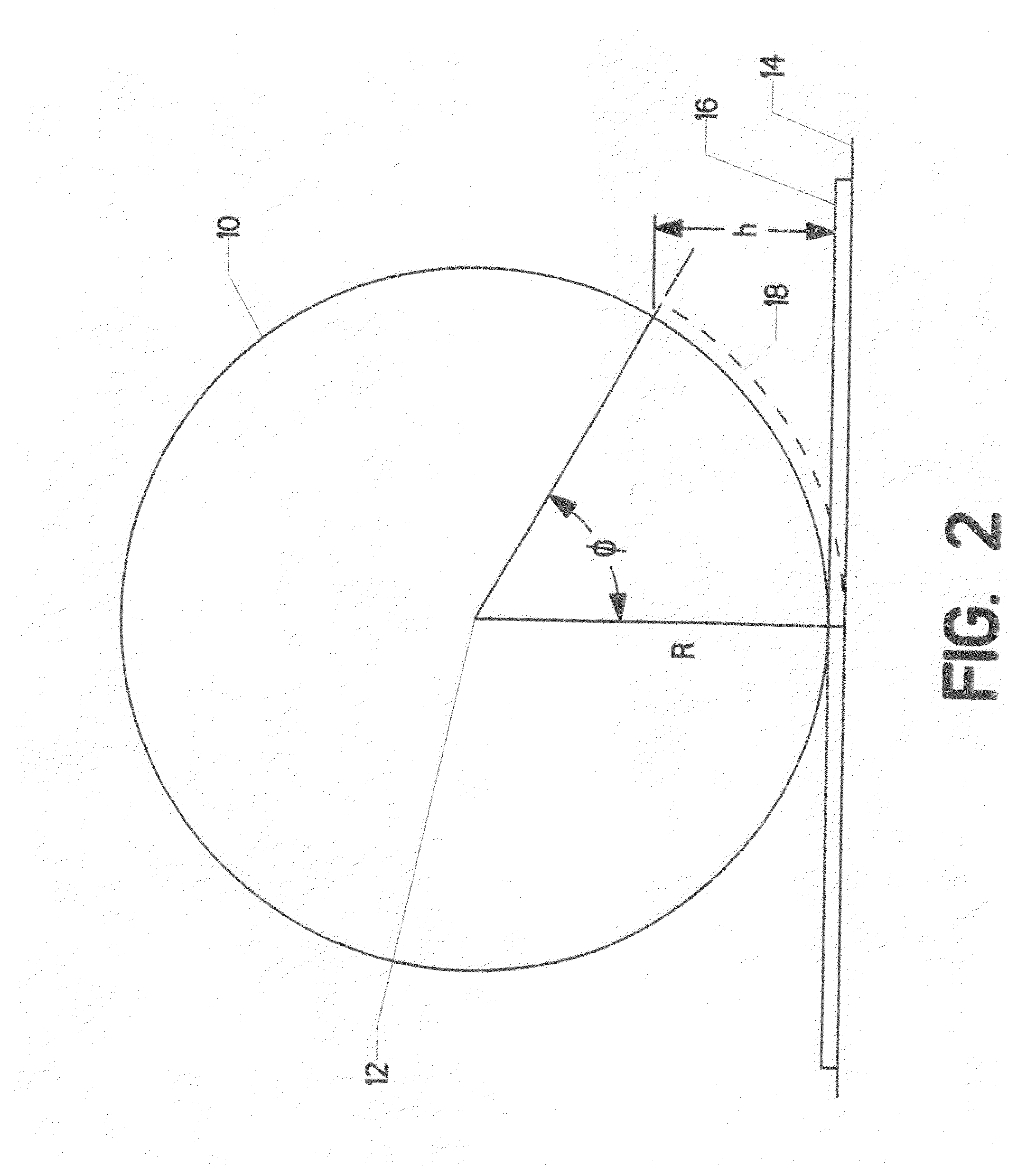Method of making graphene sheets and applicatios thereor
a graphene sheet and graphene technology, applied in the field of graphene xray window, can solve the problems of compromising the sealing properties of windows, and difficult to make extremely thin windows without pinholes
- Summary
- Abstract
- Description
- Claims
- Application Information
AI Technical Summary
Problems solved by technology
Method used
Image
Examples
Embodiment Construction
[0015]FIG. 1 shows a plot of transmission versus X-ray energy for a graphene window and a polyimide window. The graphene window is the upper curve and the polyimide is the lower curve. The graphene window is made of about 20 individual layers of graphene, having a combined thickness of 0.02 microns. The reader will observe that the graphene window of 0.02 micron thickness would pass 50% of 40 eV radiation and 65% of 54 eV Li(K) x-rays. In order to obtain good transmissibility for even longer wavelength detection, 10 layers of graphene could be used.
[0016]Researchers at Cornell University showed a path toward production of such windows by attaching graphene to scotch tape and then applying the tape to a silicon wafer. The present invention proposes applying a very thin layer of adhesive to a micromachined silicon, silicon nitride or electroformed grid with tiny holes. Sheets of highly oriented Pyrolytic graphite (“HOPG”) would be stuck to double stick tape to peel off a large number ...
PUM
| Property | Measurement | Unit |
|---|---|---|
| energy | aaaaa | aaaaa |
| thickness | aaaaa | aaaaa |
| thickness | aaaaa | aaaaa |
Abstract
Description
Claims
Application Information
 Login to View More
Login to View More - R&D
- Intellectual Property
- Life Sciences
- Materials
- Tech Scout
- Unparalleled Data Quality
- Higher Quality Content
- 60% Fewer Hallucinations
Browse by: Latest US Patents, China's latest patents, Technical Efficacy Thesaurus, Application Domain, Technology Topic, Popular Technical Reports.
© 2025 PatSnap. All rights reserved.Legal|Privacy policy|Modern Slavery Act Transparency Statement|Sitemap|About US| Contact US: help@patsnap.com



